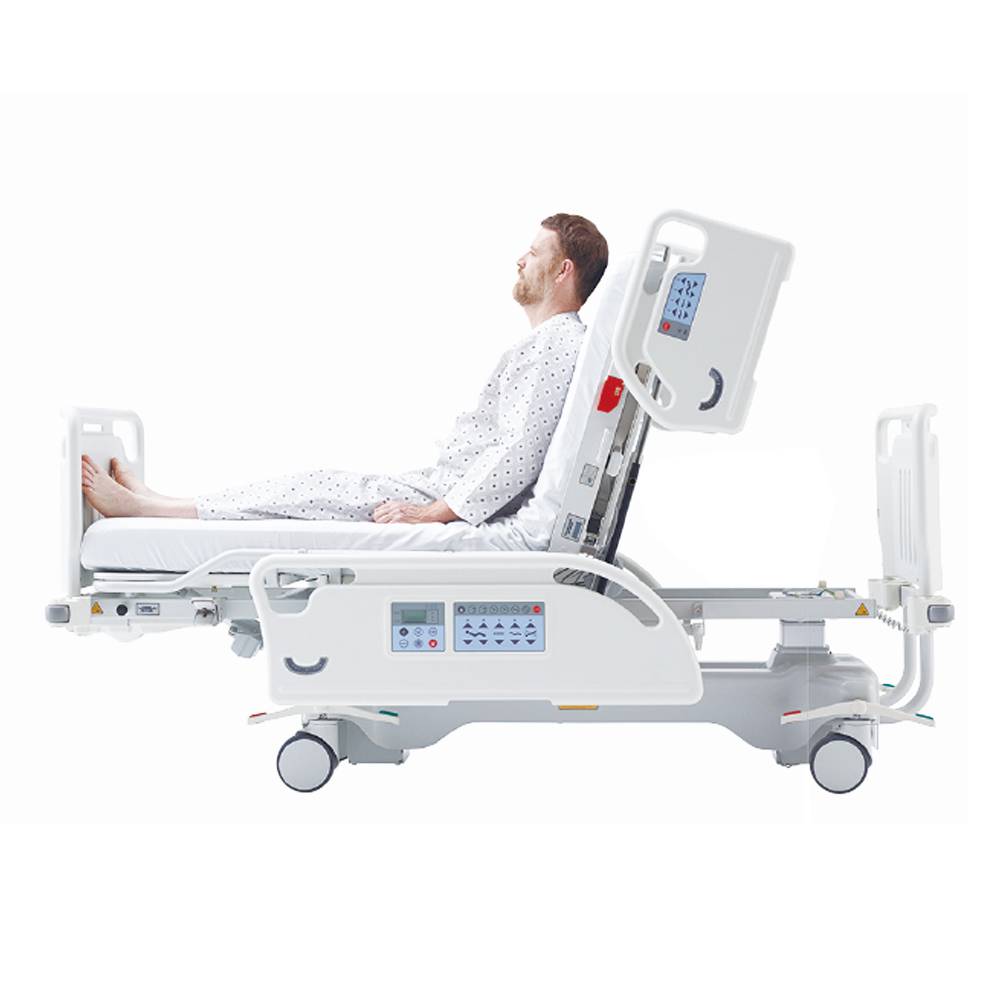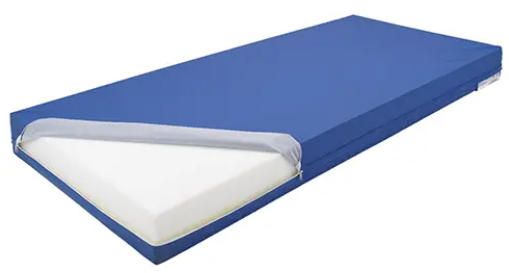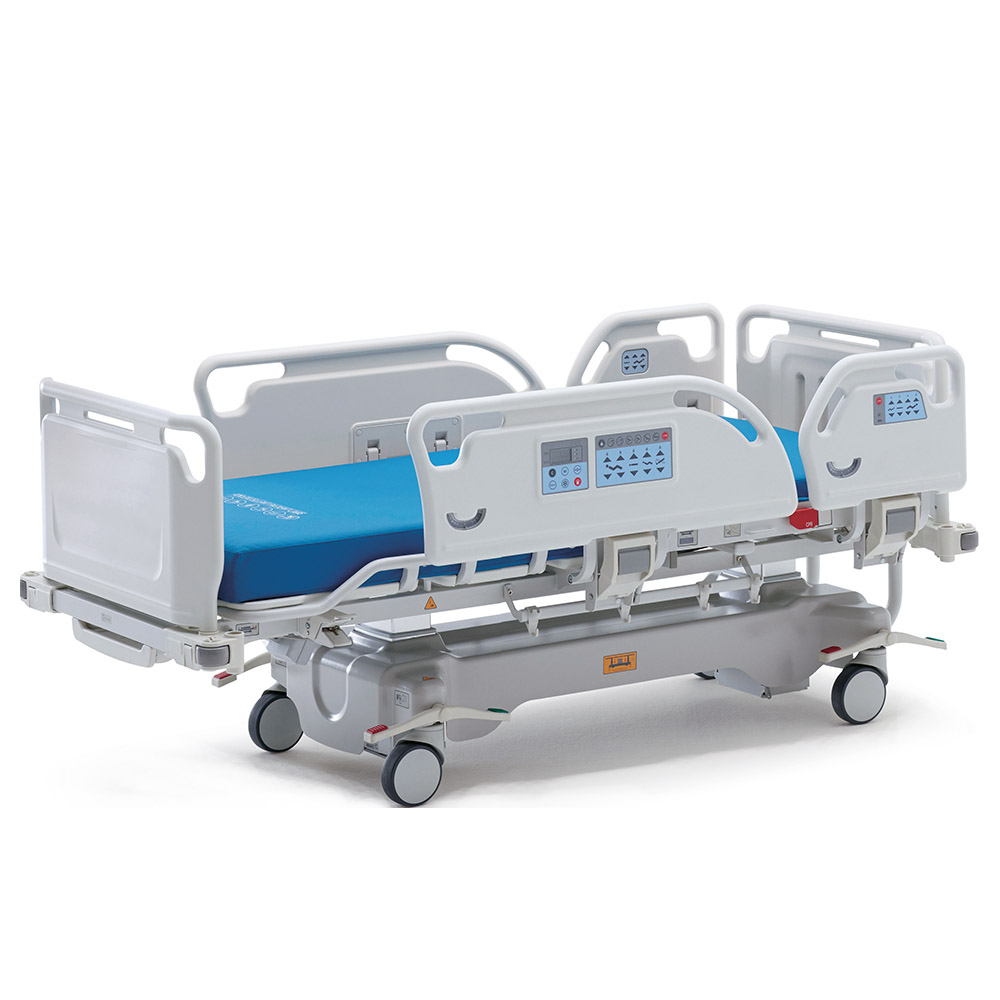Full Electric Hospital Beds Benefits
From my experience, a full electric hospital bed offers great flexibility for both patients and caregivers. They are different from semi-electric models. With a full electric bed, you use electric motors and a remote to adjust each key part. You can change the bed’s height, lift the head, and raise the foot section, all separately.
I think this push-button control makes adjustments simple. This improves patient comfort and makes the caregiver’s job much easier.

Features and Assistant Function
Position Adjustments: Patients can change their own position. I believe this improves comfort and helps reduce the chance of getting bedsores.
Simple Controls: The remote controls are direct and easy to handle. They allow for quick, exact changes, which is a big help for anyone with limited movement.
Mattress Choices: You can use these beds with different mattresses. I recommend you consider standard foam, memory foam, or alternating pressure mattresses to prevent pressure ulcers.
Safety Rails: You can get side rails in either full or half lengths. This lets you pick the right amount of safety for each person.
Trendelenburg Tilt: I suggest you check for a Trendelenburg (tilt) function. Some beds have this tilt setting for medical treatments, but it’s not on every model.
Why I Recommend Them for Healthcare Settings
I see full electric hospital beds used often in hospitals and rehabilitation centers. They are also becoming a popular choice for care at home.
In my opinion, their combination of easy adjustments, safety options, and simple controls makes them a better choice than manual or semi-electric beds. This improves patient care and helps caregivers be more effective.
Combining Memory Foam Mattresses and Hospital Beds
From my experience, combining a memory foam mattress with an electric hospital bed creates a major improvement in patient care. I believe it boosts both comfort and safety. This is particularly true for patients needing long-term or intensive attention.

Pressure Ulcer Prevention: I recommend memory foam because it molds to each patient’s unique body shape. It spreads weight across the mattress, which greatly lowers the risk of pressure ulcers and bedsores. This feature is a huge help for patients who are confined to bed for long stretches of time.
Better Blood Flow and Pain Relief: The way memory foam contours to the body eases pressure on sore spots and joints. This promotes healthier blood flow and can reduce inflammation. I’ve seen it help with joint pain, which is vital for older patients, heavier users, and people recovering from injury.
Keeping Skin Healthy with Temperature Control: Many modern hospital memory foam mattresses use materials with tiny air pockets. These pockets allow air to flow through the mattress. I find this helps pull away heat and moisture from the skin. The result is healthier skin with a lower risk of irritation.
Built to Last: I’ve found that most hospital-grade memory foam mattresses use high-density foam. This makes them strong and flexible. They resist sagging or developing permanent dips, even after a lot of use. This saves money on replacements and ensures patients get the support they need.
Helping with Movement: Good edge support and balanced firmness make it easier for patients to get in and out of bed. This simple feature reduces the risk of accidental falls. It also helps caregivers when they need to reposition patients.
A Real-World Example: I suggest looking at products like the Grace Medy Hospital Bed Mattress. It uses high-density foam for great pressure relief. You’ll find it used in many hospitals and long-term care homes because of its excellent performance and positive patient reviews.
What the Evidence Shows: Clinical studies back this up. The research shows that changing from a standard mattress to a memory foam or high-spec foam mattress can greatly lower how often patients get pressure ulcers.
My Main Takeaway: Better Results for Patients
Putting a memory foam mattress on an electric hospital bed enhances patient comfort. It also actively prevents health issues related to being immobile. I think this highlights its importance for both hospitals and home care.
Key Benefits of a Full Electric Hospital Bed With a Memory Foam Mattress
From my experience, using a full electric hospital bed with a memory foam mattress is a game-changer for patient care. It merges modern technology with comfort to make a real difference.

1. Simple Remote-Controlled Adjustments
I’ve seen how a simple remote lets patients and caregivers change the bed’s height, backrest, and leg positions.
No one needs to lift the patient manually. This cuts the risk of injury for caregivers. It also allows for quick position changes for feeding, bathing, or medical care.
I believe these features save time. They make the daily care routine much smoother.
2. Better Pressure Relief and Bedsore Prevention
Memory foam personally shapes itself to each patient’s body. It spreads weight out and takes pressure off joints and bony spots.
I recommend this combination because it lowers the risk of bedsores or joint pain. It is a huge help for older or immobile patients.
You can adjust patient positions often. This, along with the foam’s support, helps heal early-stage bedsores faster.
3. Temperature and Moisture Control
Memory foam mattresses have millions of small air pockets inside a porous structure.
These features pull moisture away from the skin and manage body heat. The skin stays cool and dry.
Based on my experience, this lowers the risk of skin breakdown. It is important for keeping the skin healthy, especially for patients in bed for long hours.
4. Excellent Motion Blocking
Memory foam absorbs movement. This stops a person from being disturbed if another person moves or the bed is adjusted.
Patients can get deeper rest. I’ve seen this work well even in shared rooms or for people who are light sleepers.
5. Great Comfort, Support, and Flexibility
The mattress molds to the body’s posture. This gives custom support no matter the bed’s angle or height.
Full electric beds allow patients to sit up for activities like eating or watching TV. I think this supports a patient’s mental health just as much as their physical comfort.
I often hear from hospitals and care homes that patients report better sleep and satisfaction.
6. Durability and Value
I suggest using high-density hospital memory foam. These mattresses last for years without sinking or leaving permanent dips.
Full electric beds are built for constant use. With good care, they have a long life.
This strength means you buy replacements less often. This leads to lower costs over time for hospitals and home caregivers.
7. Safer Movement
I like features such as adjustable side rails and locking wheels. They make the patient safer during transfers.
Patients find it easier to get in and out of bed. In an emergency, this helps everyone respond faster and more safely.
8. Help for Caregivers
The adjustable height and remote controls help caregivers a lot. They can do tasks like dressing or wound care with less physical effort.
This makes care safer for the patient and the staff. In my view, this leads to happier caregivers and fewer injuries at work.
Evidence and Real-World Results
Let’s look at the proof. Hospitals using these systems see up to a 60% drop in bedsore cases.
From my observations, better beds and mattresses help patients heal faster by making them more comfortable and improving their blood flow.
Caregivers feel more fulfilled in their jobs. Hospitals become more efficient and have lower injury rates.
Based on these facts, I strongly suggest full electric hospital beds with memory foam mattresses. I believe they are a top choice for patient health, safety, and the overall quality of care.
